Introduction
As technology continues to advance at a breakneck pace, the idea of transforming our homes into immersive entertainment hubs is closer to reality than ever. The latest innovation promising to revolutionize our viewing experiences is the 4D home theater—a system that brings the excitement of large-scale 4D theaters directly to our living rooms. This article explores what 4D home theaters offer, the technology behind them, and both the potential benefits and limitations they present to consumers today.
The Rise of 4D Home Theaters
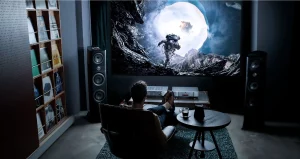
The demand for new, exciting home entertainment has been growing fast, and 4D home theaters are leading the way. Originally, these immersive setups were only found in big theaters or theme parks. Now, with advancing technology, it’s possible to bring this experience into homes. More people are looking for a high-energy, interactive way to watch movies, and 4D theaters give them just that.
Understanding 4D Home Theater Technology
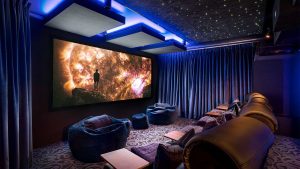
4D home theaters go beyond traditional 3D by adding physical elements to the experience. While 3D technology relies solely on visual enhancements, 4D adds a physical dimension—think moving seats, wind effects, water sprays, and even scent diffusion. The goal is to fully engage the senses, making the audience feel as though they are within the scenes unfolding on screen. This shift from passive viewing to active experience marks a transformative step in home entertainment.
How 4D Technology Works at Home
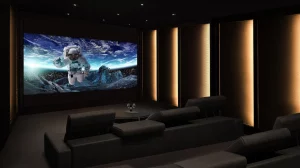
Setting up a 4D theater at home requires specialized equipment. Motion seats move in sync with the scenes, creating the feeling of being in the movie. Small devices installed around the room produce effects like wind, mist, or even scent. Advanced surround sound systems complete the setup, making every scene feel bigger and more exciting. Together, these elements turn any room into a private mini-theater.
The Role of 4D in Modern Home Entertainment
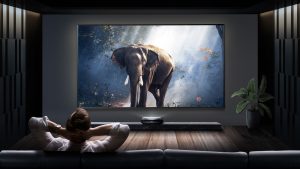
4D technology is changing how people see home entertainment. While regular home theaters offer great picture and sound, 4D goes beyond this by engaging multiple senses. Imagine feeling a gentle breeze during a beach scene or a rumble under your seat during a car chase. These small details bring stories to life in a way that standard screens just can’t match.
Key Components of a 4D Home Theater System
- Motion Seating: Seats in 4D theaters move in sync with the on-screen action. Some are even designed with haptic feedback technology to mimic vibrations and physical impact, enhancing the realism.
- Environmental Effects: Fans, misters, and scent diffusers simulate natural environments, such as wind or rain.
- Enhanced Audio: 4D systems employ advanced surround sound to intensify the auditory experience, creating an audio-visual environment that envelops the viewer.
These components work together to deliver a multisensory experience that’s more than just watching a movie—it’s about feeling every scene as if you were inside it.
Advantages of 4D Home Theaters
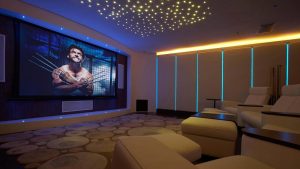
Investing in a 4D home theater can turn routine movie nights into memorable, immersive experiences. Some key benefits include:
- Enhanced Engagement: Viewers feel more connected to the storyline, leading to a greater sense of immersion.
- Cinematic Feel: 4D home theaters replicate the luxury of high-end cinema experiences at home, making them an attractive option for movie enthusiasts.
- Social Appeal: They offer a unique way to entertain family and friends, transforming home gatherings into exciting events.
Limitations and Considerations
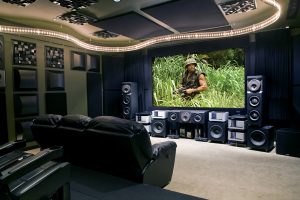
While 4D home theaters offer a range of benefits, there are also limitations to consider:
- High Cost: The technology required for a full 4D experience can be expensive, with motion seats, environmental effect devices, and high-quality audio systems adding up.
- Space Requirements: Installing a 4D setup requires sufficient space to house the additional equipment and ensure the effects work effectively without crowding the room.
- Maintenance Needs: Components like misting systems, fans, and scent dispensers require regular upkeep, which can increase the overall cost and time needed to maintain the system.
The Growing Demand for 4D Technology

More people want to make their home entertainment setups feel special, and 4D technology is meeting that need. As people invest in making their homes more comfortable and enjoyable, 4D theaters offer something unique. They bring excitement and luxury, making them a top choice for those who want a truly immersive home setup.
Why Space Matters in a 4D Home Theater
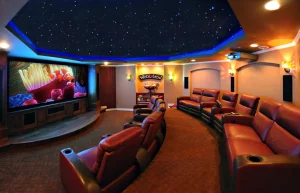
To enjoy a 4D home theater, you need enough room for the equipment to work well. Motion seats, for instance, need space to move safely. Fans and other effect devices also need enough space to feel realistic. Small rooms can limit these effects, which is why 4D setups work best in larger spaces. Planning the room layout is important to get the best experience.
Will 4D home theaters become mainstream?
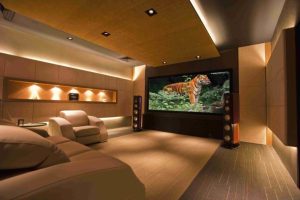
Though 4D home theaters offer an unmatched experience, their high cost and limited content availability may restrict their appeal to a niche market for now. However, as technology becomes more affordable and content producers develop more 4D-friendly content, there is potential for growth in the market. Streaming services and movie studios could play a vital role by adapting content for 4D experiences, making it easier for consumers to find and enjoy.
Future Trends in 4D Home Theaters
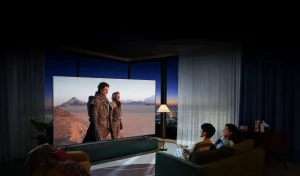
As 4D technology advances, more affordable options are likely to enter the market, making it accessible to a wider audience. Additionally, new innovations, such as customizable effects and advanced artificial intelligence, may allow for greater personalization. This evolution will likely shape 4D home theaters into more versatile and user-friendly setups in the coming years.
Analysis Table: Pros and Cons of 4D Home Theaters
| Aspect | Pros | Cons |
|---|---|---|
| Immersive Experience | Deep engagement with the storyline | Can be overwhelming for some viewers |
| Social Entertainment | Creates a unique shared experience for gatherings | Limited appeal for solo viewers |
| Initial Investment | High-end, luxury feel | Expensive setup with high upfront costs |
| Maintenance | Increased durability with proper care | Regular upkeep needed for optimal function |
| Space Requirements | Provides a mini-cinema environment | Requires a dedicated space, which may not suit all homes |
Comparative Table: 4D Home Theater vs. Traditional Home Theater
| Feature | 4D Home Theater | Traditional Home Theater |
|---|---|---|
| Level of Engagement | High (immersive, multisensory) | Moderate (visual and audio focus) |
| Audience Appeal | Best for group experiences | Suitable for both solo and group viewing |
| Setup Cost | Higher, due to advanced equipment | Lower, with fewer specialized requirements |
| Maintenance Needs | High, requires regular upkeep | Low, occasional maintenance of equipment |
| Space Requirements | Larger, dedicated room ideal | Flexible, can fit in standard living spaces |
Conclusion
The emergence of 4D home theaters represents a significant shift in the world of home entertainment. While the technology has yet to become mainstream, the potential for immersive experiences is attracting a growing number of enthusiasts. With continuous advancements, these systems may become a staple of luxury home setups, providing a cinema-like experience that captures all the excitement of a theatrical release.











